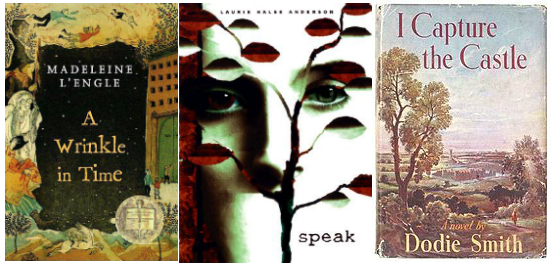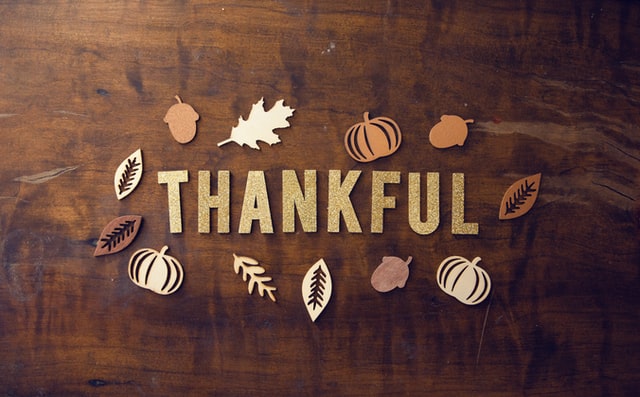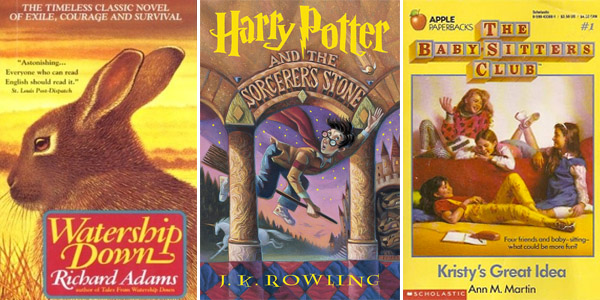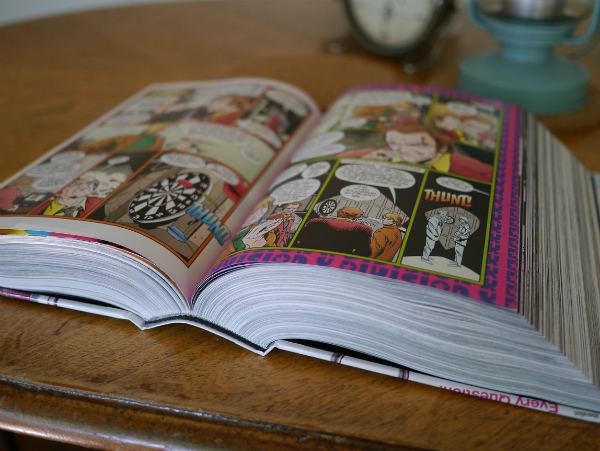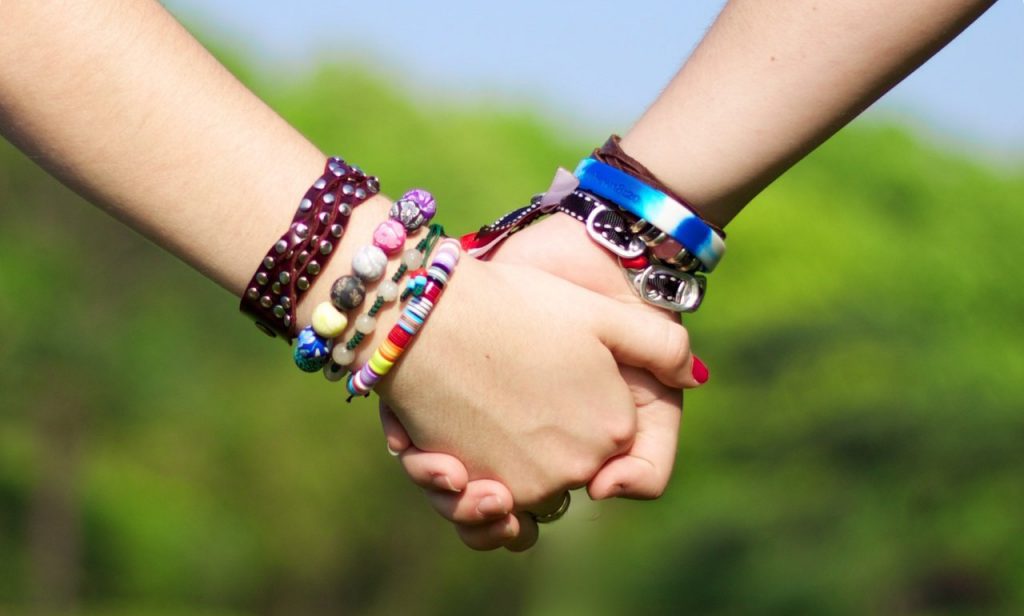The Children’s Books I’m Thankful For (And What They Taught Me)
I think I speak for all bookworms when I say that, growing up, books were the primary way I learned about the world. The fantastical stories and worlds I was introduced to were necessarily much bigger and grander than my own life (though I have no complaints on that score), and I spent a lot of time exploring them by the dozen. There were, however, a handful of stories that have stayed with me, that taught me something lasting, and in the spirit of giving thanks, I’ve compiled them here.
1. A Wrinkle in Time, Madeleine L’Engle
So, growing up I was awkward and bespectacled and had younger brothers that meant a lot to me. So when I say that Meg from A Wrinkle in Time was basically an exact replica of me that gets to have insane intergalactic adventures, I want you to understand what that means. Meg was me, but a version of me that daringly saved her brother from one of the creepiest sci-fi villains I’ve ever encountered, made friends with cuddly aliens wherever she went, and won the affections of adorable boy next door Calvin. Calling my relationship with Meg hero worship is not so off the mark.
What I learned: Stay true to who you are, it’s what makes you powerful.
2. The Paper Bag Princess, Robert Munsch
This is a princess story. About a girl who vanquishes a dragon to save her prince. And then decides that the prince in question is kind of a tool. And it was written thirty-four years ago. There was no simpering, no meekly waiting for rescue. The PBP loses everything, and instead of falling into the throes of despair, takes matters into her own hands. It’s marvelous.
What I learned: Sisters doing it for themselves! This book was quite possibly my first overt girl-power message. Robert Munsch, sower of feminist seeds.
3. Calvin and Hobbes, Bill Waterson
There’s something so timeless about Calvin and Hobbes, as evidenced by the generations who have loved the adorable duo of striped troublemakers. Despite the fact that I read many of the stories in many different places, these books will always, for me, be a reminder of spring breaks spent on mountains with friends, of hot chocolate and warm soup after a long day skiing. Don’t ask me why, but that’s the memory that’s stood the test of time.
What I learned: There’s nothing better than curling up on a couch with your best friend and chuckling over Calvin’s latest hijinks.
4. Stellaluna, Janell Canon
Fruit bat Stellaluna gets lost as a baby, and drops down into a mama bird’s nest. She tries so hard to fit in, to eat and fly like birds do, but in the end she learns that her reflexes weren’t steering her wrong, and that for a bat, she was doing things right all along. There isn’t a shortage of “be true to yourself” children’s books, but Stellaluna is beautifully illustrated, beautifully written, and doesn’t just teach that it’s okay to be different, but that sometimes different is what works best.
What I learned: Trust your instincts.
5. The Harry Potter books (all of them)
I was ten when I first started Harry Potter and the Philosopher’s Stone. There was still a chance for me to go to Hogwarts at that point (and nothing will convince me that there aren’t continuing education magic night classes being organized for those of us whose letters got lost during the war with Voldemort). When I finally put Deathly Hallows down, crying bitterly, I was seventeen. I felt like I’d lost a friend, that an important part of my life was now over. The Harry Potter books were my first obsession, my first true literary love, and they’ll be required reading for any kid (and, let’s face it, adult) in my life.
What I learned: You can find a true friend in a fictional character.
6. Speak, Laurie Halse Anderson
I stumbled across Speak completely by accident in my high school library, and I’m so grateful that I did. The YA novel tells the story of Melinda Sordino who, the summer before she starts high school, gets raped at a party. She calls 911 but can’t explain what happened, and since several students get arrested when the police show up, she starts her new school as an outcast. Melinda retreats farther into herself, and stops speaking almost entirely. It’s a powerful (and often censored) novel, and one that made me realize how little survivors of sexual crimes are supported.
What I learned: Empathy.
7. Howl’s Moving Castle, Diana Wynn Jones
I don’t think anyone is surprised when I say that I love sprawling, complex worlds that have magic in them. But the type of magic I like best is one that has rules, consequences, and a history (what? I like to be organized). Basically every story Diana Wynne Jones ever wrote is a treat, but my all-time favourite is Howl’s Moving Castle, in which teenaged Sophie gets turned into an old woman and finds work as a cleaning lady for the notoriously dangerous wizard Howl. There are magical contracts, poorly worded spells, and doors that have to be opened just right, and I love it all.
What I learned: Sometimes if you become someone else, you end up learning a lot about who you are.
8. I Capture the Castle, Dodie Smith
If I one day end up in a drafty English castle with a bohemian family who are all Creative Spirits but struggle to make ends meet, I’m blaming this novel. It just makes the entire situation so unfortunately romantic-sounding. At the centre of the book are Cassanrda and her sister Rose (because of course their names are Rose and Cassandra) who must try to get their family out of poverty, carve out a place for themselves in the world, and get the neighboring rich American brothers to fall in love with them.
What I learned: The heart wants what it wants. And, also, locking yourself up in a ruin is an effective method of curing writer’s block.
9. The Hitchhiker’s Guide to the Galaxy, Douglas Adams
I grew up on a pretty steady diet of Star Trek, so it wasn’t a huge stretch for me to gravitate toward Adams’ rip roaring sci-fi series kick started by The Hitchhiker’s Guide to the Galaxy. With ships that run on improbability, million year-old clues etched into icebergs, self-slaughtering deli meats, or sentient potted plants, Adams made sure we knew that the final frontier is anything but predictable.
What I learned: Don’t worry, the future, and by extension, adulthood, will be just as fun and full of whimsy.
10. Miss Rumphius, Barbara Cooney
Cooney’s gorgeously illustrated picture book tells the story of Miss Alice Rumphius who, at a very young age, decides she will travel the world before living in a house by the sea. She does just that, but never forgets what her grandfather tells her: That it’s not enough to see the world’s beauty, you must add your own to it.
What I learned: We all have a responsibility to leave the world better than how we go it.
Also, since I couldn’t possibly limit myself to ten books (I originally planned on five! Ha!), honorable mention goes to Antoine de Saint-Exupéry’s The Little Prince and Roald Dahl’s Matilda, plus Anne of Green Gables, French comic Mimi Cracra, The Magic School Bus series, and anything written by Tolkien. Oh, and Harriet the Spy! And Lilly’s Purple Plastic Purse! Okay I’m done now! Add your own in the comments!
